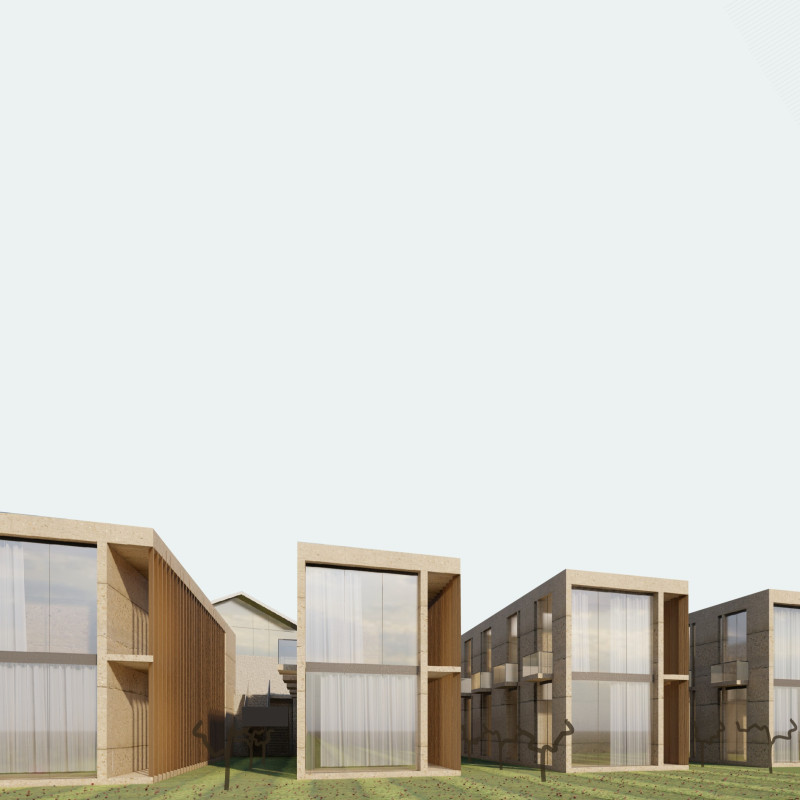5 key facts about this project
The Monte d'Oiro Wine Hotel is located in the scenic landscape of the Lisbon grape fields, serving as a destination for both wine lovers and visitors. The design integrates the hotel harmoniously with the surrounding vineyard, creating a strong connection between the built environment and the agricultural landscape. The concept is based on an understanding of the vineyard's layout and the requirements of the Monte d'Oiro production facilities, positioning the hotel as both a place to relax and a significant part of the wine-making process.
Architectural Arrangement
Buildings are arranged to enhance views of the vineyard while keeping the operations of the winery unobstructed. This careful positioning allows guests to experience a visual and spatial connection to the landscape. The layout guides visitors along a connecting platform, encouraging exploration through various areas of the hotel.
Functional Hub
At the center of the design is the lobby and restaurant, which serve as a main gathering space for guests. This area promotes interaction and movement between the different functions of the hotel, including dining and recreational options. The connecting platform simplifies guest flow, making movement throughout the premises easy and intuitive.
Barrel Room Visibility
A highlight of the design is the Barrel Room, which is essential for wine production. This room is designed to be highly visible, drawing visitors' attention and showcasing the wine-making experience. By emphasizing this important aspect, the design enhances appreciation for the craft of winemaking and connects the hotel to its operational roots.
Strategic Site Definition
The placement of meeting rooms plays a vital role in defining the edges of the property and ensuring adequate parking space. This strategic arrangement balances functionality with aesthetic elements, maintaining a focus on the hotel’s multiple services without detracting from the overall vision for the site.
The overall design features large windows that allow natural light to fill interior spaces. These openings offer views of the vineyards, helping to create a calm atmosphere that reflects the essence of the surroundings. The architecture blends indoor and outdoor experiences, inviting guests to engage with the beauty of the landscape.






















































